3डी एनाटॉमी मॉडल
पूरी तरह से इंटरैक्टिव शैक्षिक पुरुष और महिला शारीरिक मॉडल के साथ अपने सीखने में एक और आयाम जोड़ें।
मानव शरीर रचना के बारे में सीखना इतना मजेदार कभी नहीं रहा!
खरीदना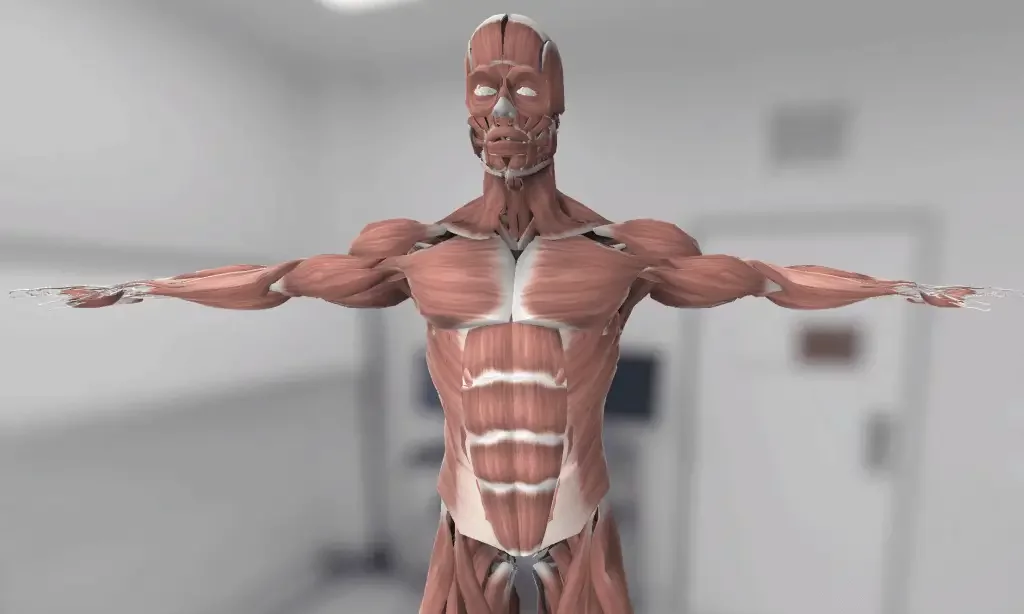
The nasal cavity is a large, air-filled space that opens at the nostrils, which are the two openings of the nose. The nasal पट is a partition that divides the cavity into two separate cavities. The nasal cavity is lined with a mucus membrane that helps keep your nose moist. The openings to the nasal cavity at the nostrils are lined by modified skin and have short hairs called vibrissae. The nasal cavity has many important anatomical landmarks. It has a roof (the uppermost part of the cavity), projections of mucosa from either side called concha, and small empty spaces (sphenoethmoidal recess) which are lined with olfactory mucosa. These barriers give mechanical protection from the invasion of pathogens.
इस लेख में, हम आपको नाक गुहा के बारे में जानने के लिए आवश्यक सभी चीजों को कवर करेंगे और शरीर के इस हिस्से से जुड़ी सबसे आम बीमारियां क्या हैं।
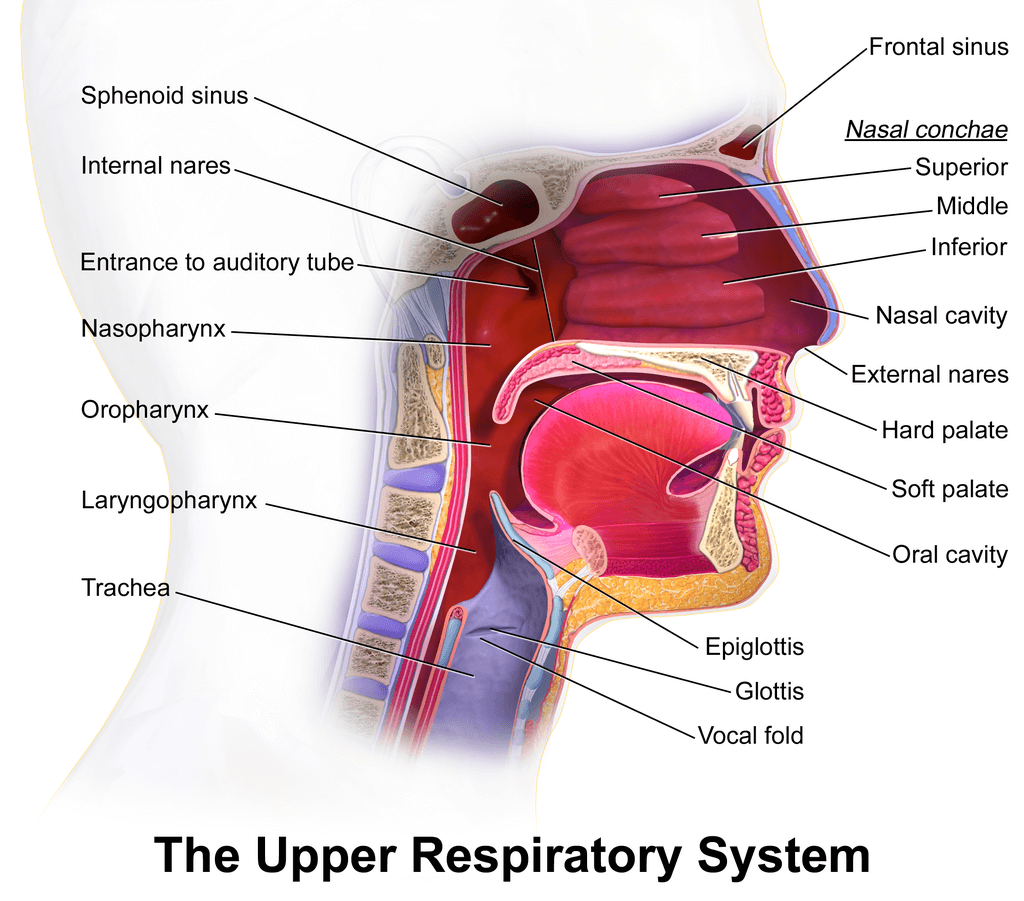
यह गुहा नासिका द्वारा दो अलग-अलग गुहाओं में विभाजित है पट. Each cavity consists of a roof, floor, and two walls on the sides; medial wall, and lateral wall. Each cavity comprises a nasal vestibule (which is the area below the nostrils), respiratory section, olfactory(smell-related) region, and some surrounding structures.
नासिका छिद्र के ठीक नीचे के क्षेत्र को वेस्टिबुल कहा जाता है, जो बालों के साथ पंक्तिबद्ध होते हैं जो धूल, रेत और अन्य कणों को फेफड़ों में प्रवेश करने से रोकते हैं।
This section of the cavity refers to the passages through which air travels to reach the trachea and eventually the lungs. The respiratory section of each nostril contains four conchae (protrusions) covered by the nasal mucosa. Underlying these conchae are small holes. These openings connect to the paranasal sinuses surrounding the cavity.
घ्राण श्लेष्मा नाक गुहा के ऊपरी क्षेत्र में स्थित होता है, गंध की अनुभूति के लिए घ्राण श्लेष्मा झिल्ली का समर्थन करता है।
आसपास की संरचनाओं में शामिल हैं:
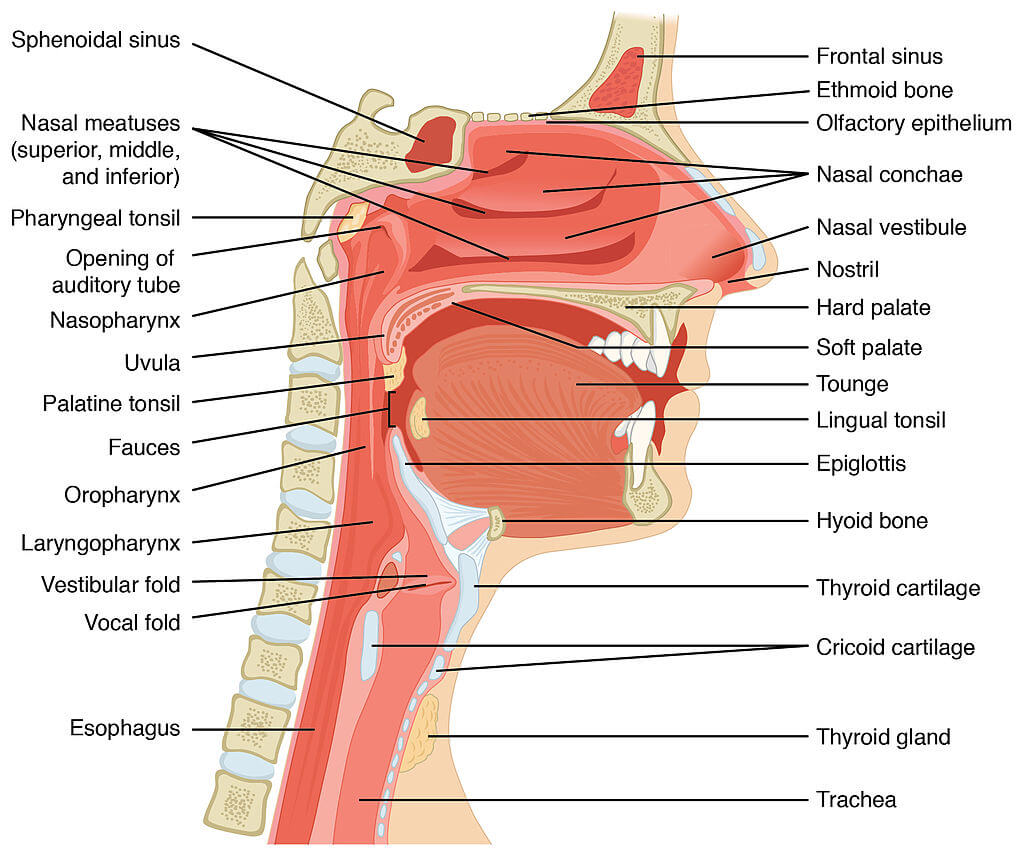
गंध गंध की भावना है जो गुहा (घ्राण क्षेत्र) के शीर्ष पर होती है। नाक गुहा के इस हिस्से को कोशिकाओं के साथ पंक्तिबद्ध किया जाता है जिसे कहा जाता है बहिर्ग्रहण उपकला ऊतक, and it is interspersed with neurons containing sensory cilia.
The pathway of olfactory conduction goes from the olfactory receptor cells to the olfactory bulb in the forebrain, via the olfactory nerve.
Sensations of smell are experienced when certain chemical substances become dissolved in the thin layer of fluid covering the surface of the mucous membrane of special cells called olfactory receptor cells which come in contact with the olfactory hairs, or cilia.
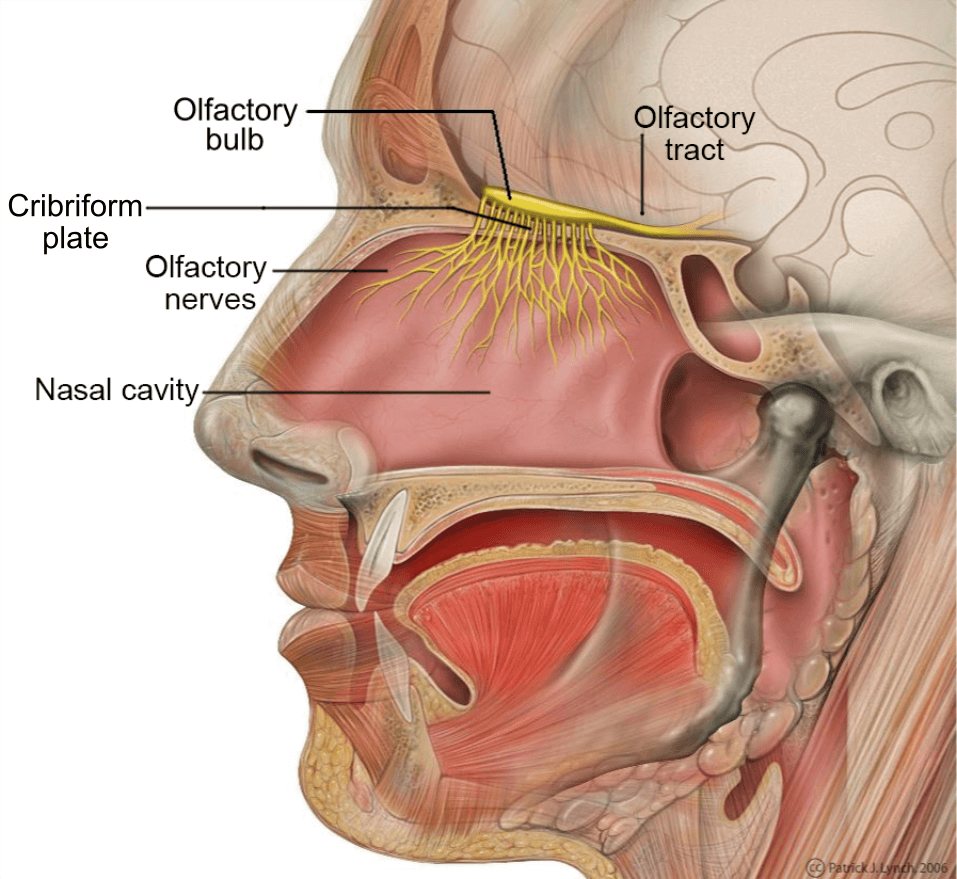
The inhaled air must be warmed and humidified before it reaches the lungs. This is mainly done in the upper respiratory portion of the nasal cavity which is lined with special cells known as the ciliated pseudostratified epithelium.
बलगम की नमी साँस की हवा के आर्द्रीकरण में एक भूमिका निभाती है। यह भी टर्बाइनेट्स नासिका मार्ग में हवा को गर्म और आर्द्र बनाए रखने के लिए हवा के प्रवाह को धीमा कर दें।
The cilia in the nasal cavity also play a role in defending the organism, as they move the mucus and eventual pathogens (germs and bacteria) towards the throat (pharynx) to eliminate them.
The nose receives blood from the internal and external carotid artery arteries.
The internal carotid artery branches to supply:
• Anterior ethmoidal artery
• Posterior ethmoidal artery
The ethmoidal arteries descend into the cavity through openings in the frontal bone (the cribriform plate.) to reach the nasal cavity.
External carotid branches that supply the nasal cavity include:
• स्फेनोपालाटाइन धमनी
• Greater palatine artery
• Superior labial artery
• पार्श्व नाक धमनियां
नाक के संक्रमण को अक्सर कार्यात्मक रूप से विशेष और सामान्य संक्रमण में विभाजित किया जाता है।
Unique sensory innervation refers to the power of the nose to smell. The exteroception nerves are responsible for this. Branches of the first cranial nerve run through the cribriform plate to produce special sensory innervation to the nose.
General sensory innervation to the septum and the lateral walls is delivered by the nasopalatine nerve and the nasociliary nerve (branch of the ophthalmic division of the trigeminal nerve; the fifth cranial nerve.)
The inflammation and swelling of the mucus membrane of the nose. It is characterized by a runny nose, sneezing, and stuffiness.
इसके द्वारा इलाज किया जा सकता है:
Epistaxis is simply an elaborated medical term for a bloody nose. The nasal cavity is very vascularized so any trauma to the nose, dry nasal passageways, certain medications like blood thinners, or chronic conditions like a sex-linked disorder can commonly cause bleeding from a part of the nasal septum called the Little’s area.
एक विचलित पट तब होता है जब आपके नासिका मार्ग के बीच की पतली दीवार (नाक पट) एक तरफ विस्थापित हो जाती है। एक विचलित पट गर्भाशय में विकसित हो सकता है, या जब भ्रूण अभी भी गर्भ में है, साथ ही साथ बर्थिंग प्रक्रिया के दौरान भी।
The presence of a deviated septum can cause frontal headaches and bleeding from the nose.
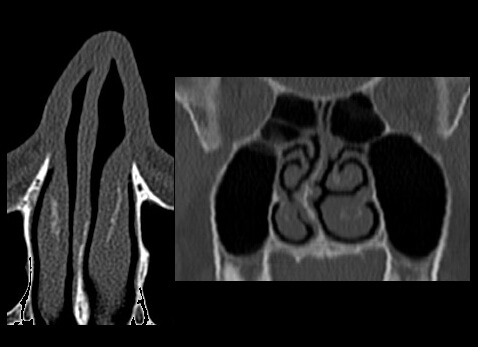
Turbinates are small structures inside the nose that cleanse and humidify the air that passes through the nostrils into the lungs. They are made of bone and soft tissue and are located inside the nose near the septum. Enlarged turbinates are a reaction to seasonal allergens. Sometimes, the enlargement is caused by environmental irritants. Chronic sinusitis, which causes persistent inflammation in the nasal passages, may also trigger chronic swelling of the turbinate. The treatment for enlarged Turbinates is often surgical reduction.
मैरी नट। मानव शरीर रचना विज्ञान और शरीर क्रिया विज्ञान की अनिवार्यता। (7वां संस्करण)। सैन फ्रांसिस्को: बेंजामिन कमिंग्स; 2003. [पुस्तक]
कैसर जीई। जन्मजात प्रणाली। डॉक्टर कैसर का जीव विज्ञान होम पेज। सामुदायिक कॉलेज बाल्टीमोर काउंटी। 2007.
ओरहिली आर, मुलर एफ, कारपेंटर एस, स्वेन्सन आर। नाक और शारीरिक गुहा साइनस। अध्याय 52. बुनियादी मानव शरीर रचना विज्ञान। आर स्वेन्सन, एड. डार्टमाउथ मेडिकल कॉलेज। 2008.
मान एमडी। इंद्रिय छाप और बहिर्ग्रहण इंद्रियां। अध्याय 10. कार्रवाई में प्रणाली। [ऑनलाइन]। 2008. यूनिवर्सिटी ऑफ अमेरिकन स्टेट मेडिकल सेंटर। [पुस्तक]
ओनल आरएम, बील जूनियर आरजे, स्लेसिंगर जे। नाक की सर्जिकल एनाटॉमी। ओटोलरींगोल क्लीन नॉर्थ एम। 1999 फरवरी;32(1):145-81। [पबमेड]
पटेल आर.जी. नाक की शारीरिक रचना और प्रदर्शन। फेशियल प्लास्ट सर्जन। 2017 फरवरी;33(1):3-8. [पबमेड]
Lafci Fahrioglu S, VanKampen N, Andaloro C. StatPearls [इंटरनेट]। StatPearls प्रकाशन; ट्रेजर आइलैंड (FL): ग्रेगोरियन कैलेंडर माह ग्यारह, 2020। एनाटॉमी, हेड एंड नेक, साइनस परफॉर्मेंस एंड डेवलपमेंट। [पबमेड]
हेल्थ लिटरेसी हब वेबसाइट में साझा की गई सामग्री केवल सूचना के उद्देश्यों के लिए प्रदान की जाती है और इसका उद्देश्य आपके राज्य या देश में योग्य चिकित्सा पेशेवरों द्वारा दी जाने वाली सलाह, निदान या उपचार को प्रतिस्थापित करना नहीं है। पाठकों को अन्य स्रोतों के साथ प्रदान की गई जानकारी की पुष्टि करने और अपने स्वास्थ्य के संबंध में किसी भी प्रश्न के लिए एक योग्य चिकित्सक की सलाह लेने के लिए प्रोत्साहित किया जाता है। स्वास्थ्य साक्षरता हब प्रदान की गई सामग्री के उपयोग से उत्पन्न होने वाले किसी भी प्रत्यक्ष या अप्रत्यक्ष परिणाम के लिए उत्तरदायी नहीं है।
